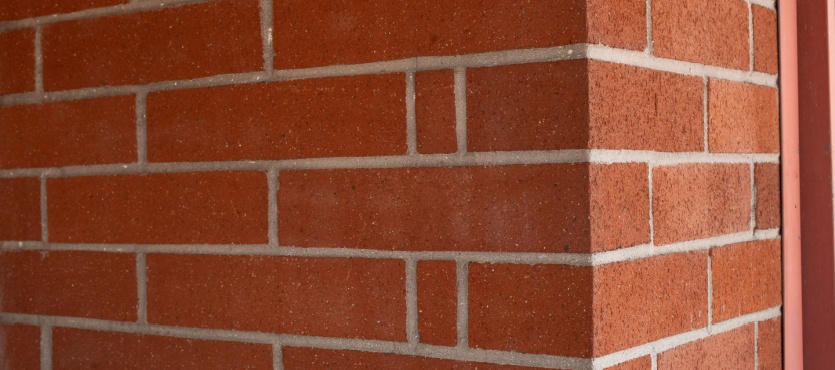Tuckpointing is an essential maintenance task for brick structures, involving the removal of damaged mortar joints and replacing them with fresh mortar. It helps preserve the structural integrity and appearance of brickwork by preventing water infiltration and addressing mortar deterioration. While tuckpointing is typically done by professionals, some homeowners may be tempted to tackle the project themselves to save money. But is DIY tuckpointing really worth the time, effort, and potential risks? Let’s go over the pros and cons of doing tuckpointing yourself and when it might be better to call in a professional.
Understanding the Tuckpointing Process
Tuckpointing is more than just applying new mortar between bricks. It involves a detailed process that requires precision and skill to ensure the brickwork remains structurally sound. The steps include:
- Removing the Old Mortar: This involves carefully grinding or chiseling out the damaged mortar from the joints without damaging the surrounding bricks. If the bricks are chipped or cracked during this process, it can lead to further problems.
- Mixing New Mortar: The new mortar needs to match the color, texture, and composition of the original mortar to ensure a uniform appearance. Using the wrong type of mortar can cause additional damage to the brickwork.
- Applying the Mortar: Once the mortar is mixed, it must be applied with precision to ensure strong adhesion and a smooth finish. Gaps, air pockets, or uneven application can lead to weak points in the wall.
Each of these steps requires careful attention to detail, making it a more complex task than many DIY enthusiasts initially expect.
Pros of DIY Tuckpointing
Cost Savings: The primary reason homeowners consider DIY tuckpointing is to save money. Hiring a professional can be costly, depending on the size and complexity of the job. For small areas of damage, doing the work yourself could potentially save you hundreds of dollars in labor costs.
Control Over the Project: For those who enjoy hands-on projects, DIY tuckpointing offers complete control over the process. You can choose the materials, the timeline, and the level of detail you want to invest in. If you’re experienced with home repairs and masonry work, it could be a satisfying challenge.
Cons of DIY Tuckpointing
Time-Consuming: Tuckpointing is a labor-intensive process that can take a significant amount of time, especially for those without prior experience. From removing the old mortar to applying the new, the process requires patience and precision. What might take a professional a few days could take a DIYer several weekends to complete, especially if unexpected issues arise along the way.
Skill and Precision Required: While it may seem straightforward, tuckpointing requires a high level of skill to execute properly. Inexperienced homeowners may struggle with removing mortar without damaging the surrounding bricks, mixing the mortar to the correct consistency, or applying it evenly. Mistakes can lead to costly repairs down the road, negating any initial savings.
Risk of Damage: Improper tuckpointing can cause serious damage to your brickwork. If the mortar mix isn’t right, it can weaken the structure of the wall. Additionally, if the old mortar is not removed properly or if the new mortar isn’t applied correctly, it can lead to gaps, cracks, or moisture infiltration, which can cause long-term issues like mold growth or structural weakening.
Matching the Original Mortar: One of the biggest challenges in DIY tuckpointing is ensuring that the new mortar matches the original in color and composition. If the mortar is mismatched, it can result in an uneven appearance, detracting from the visual appeal of the brickwork. Professionals have experience in matching mortar precisely, which can be difficult to achieve as a DIYer.
When to Call a Professional
While DIY tuckpointing may be tempting for smaller jobs, larger projects or older homes with intricate brickwork are best left to professionals. A professional mason brings the expertise, tools, and experience to handle the job efficiently and without causing further damage to your home. In addition, they are more likely to spot potential issues, such as structural weaknesses, that could complicate the project.
Calling a professional is also advisable if the mortar damage is widespread, as this can indicate deeper issues that require expert attention. Professional tuckpointing may initially seem more expensive, but it ensures long-lasting results and prevents costly future repairs.
Is DIY Tuckpointing Worth It?
For homeowners with the right skills, tools, and a small repair area, DIY tuckpointing might be worth the effort. However, for those without masonry experience, the potential risks of mistakes, improper mortar application, and damage to the brickwork often outweigh the cost savings. Hiring a professional tuckpointing service ensures the job is done correctly, preserves the structural integrity of your home, and can actually save you money in the long run by preventing further issues.
If you’re unsure whether DIY tuckpointing is the right choice for your home, it’s always a good idea to consult with a professional mason. For expert advice and tuckpointing services, contact Turnbull Masonry to ensure your brickwork remains beautiful and structurally sound for years to come.

